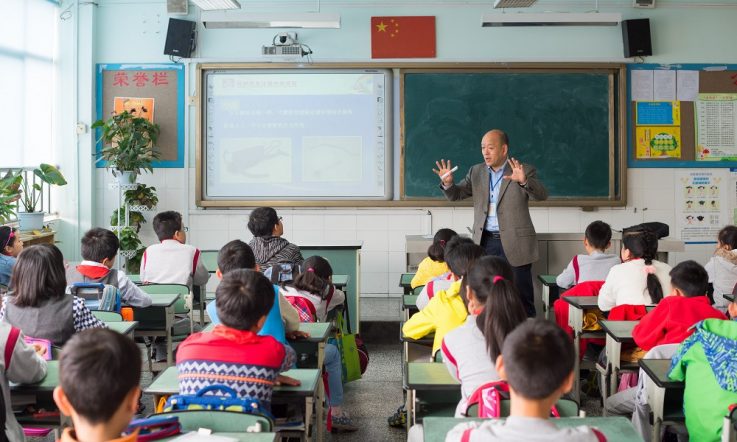Teacher engagement is an emerging topic in school education but what does it mean and what can schools do to increase teacher motivation? Jeny Raphael draws from her teaching experience and research to discuss the issue.
All over the world, rigorous research is taking place in the area of employee engagement. Businesses are prioritising employee engagement with the intent of maximising employee contribution to their success.
Gallup, a global analytics and advice firm that helps leaders and organisations solve their most pressing problems, describes engaged employees as ‘feeling responsible for and committed to superior job performance’. Schaufeli and colleagues in their 2002 study define engagement in the working place as ‘a positive, fulfilling, work-related state of mind that is characterised by vigour, dedication, and absorption’. Christian and colleagues in their 2011 study view engagement in the workplace as a motivational concept where the individual voluntarily allocates his personal resources and longs for better outcomes.
These definitions describe engagement as a mental state or a motivational disposition, and see it as a spontaneously occurring inner state which is not amenable to any kind of external manipulation. The dynamics of a working place can only set certain conditions to encourage such an attitude but cannot deliberately work towards the creation of it.
What about exploring the idea of ‘employee engagement’ among the teaching workforce? If juxtaposed with teaching, it seems the concept of employee engagement will echo a peculiar connotation. ‘Engagement’ in the teaching profession essentially is a synonym for teacher commitment, dedication, and involvement in their workspace. For the same reason, educationists and policymakers have to focus on the psycho-social factors that foster effective teaching and delve deep into the concept of ‘teacher engagement’.
Pathways to engagement
In my view, there are two kinds of ‘teacher engagement’. Rules and regulations of the institution are the basis of the first kind. These rules clearly specify what a teacher is expected to do and to what extent she can exercise her autonomy. The mandatory aspect of such rules ensures that a teacher remains officially engaged within the institutional structure and executes her duties.
The second kind of engagement is the teacher’s self-motivation. No authority or external factors can regulate the mental state leading to it. The degree to which a teacher is interested in the non-mandatory aspects of her work-space is probably a yardstick for gauging this kind of engagement. The willingness and interest of a teacher to work beyond her mandatory duties vary from one individual to another. Self-motivation enriches the professional activities of a teacher spontaneously. The drivers of engagement spring from within and do not need external involvement or monitoring. A host of educational researchers lists out the characteristics of teachers who are engaged in the latter way.
- Take the responsibility for student learning (Cotton et al., 2002)
- Constantly monitor students (Marzano, 2003).
- Recognise the instructional needs of their students and try their best to conform to those needs (Cotton et al., 2002)
- Have high expectations for their children (Boaler, 2004)
- Give prompt and certain feedbacks (Marzano, 2003) as cited in Michelle E. Cardwell (2011)
- Implement the best strategies of teaching (Marzano, 2003)
- Search for novel ideas (Marzano, 2003) as cited in Michelle E. Cardwell (2011)
A highly engaged teacher will be curious about the ‘not so explicit side’ of student personalities (and not just in grades). Students’ preferences, interests, feelings, needs, and difficulties in the overall development will catch the attention of a highly engaged teacher and she will instinctively respond to them.
Such engagement arises from the kind of relationship the teacher shares with the institution. It depends on a host of psychosocial factors thriving in the ambience of the working place that can open the door for deep engagement. It also arises from the first kind of engagement – the rules and regulations of the institution and the flexibility and trust it has in its teachers.
Are your teachers intellectually engaged?
Engaged teachers of the new millennium deliberately indulge in seeking newer avenues for experimentation and professional expansion. In this era of knowledge explosion and technological revolution, passionate teachers are conscious of strengthening and updating their knowledge on a daily basis. They keep a tab on current trends in education, research and related sciences and often redefine the boundaries of their roles as teachers. For instance, intellectually engaged teachers know that advancing their knowledge in student psychology will deepen their insight and help them address classroom issues. Their ways of dealing with students will therefore be more scientific and realistic. Such intellectually engaged teachers with fresh and effective strategies can offer solutions to challenges of an ever-evolving education system.
Can school leaders help?
Delivering the curriculum through effective teaching strategies is only one side of teacher engagement. Authentic professional engagement arises if a teacher shares a passion for teaching.
A good school leader knows that a positive school environment can enhance teacher engagement and promote learning. So what are the things that a school leader needs to remember? I have summarised a few points based on teaching experience and research work over nearly two decades.
- A mature leader of an institution knows what it means to be engaged. A teacher who executes the mandatory part of her professional duties need not be mentally ‘engaged’ in her profession.
- Real and spontaneous teacher engagement is a mental state which originates from within. So it can never be forced upon someone. Authoritarian ways of a leader stifle teacher engagement.
- Irrational feedback and criticism from principals may choke the professional spirit of many teachers and there is a higher chance for the teachers to disengage – at least mentally – from their work.
- Leaders resorting to favouritism or discrimination of any sort are unknowingly encouraging attrition of the collective spirit and goodwill of their subordinates.
- A school leader is able to identify and create situations that optimise engagement of each teacher.
- Engagement at the group level is a by-product of the sense of collaboration a school leader weaves into the fabric of group dynamics. A group of teachers who are really engaged have the potential to disseminate that quality to their colleagues.
In conclusion, I must admit that if teachers are provided with the right environment to engage, they can support their colleagues, raise the profile of the school, and deliver high quality teaching.
A version of this article first appeared in the print magazine Teacher, distributed in India, in July 2019.
References
Boaler, J. (2004). Promoting equity in mathematics classrooms: Important teaching practices and their impact on student learning. Text of a lecture given at ICME, Copenhagen.
Cardwell, Michelle E. (2011). Patterns of relationships between teacher engagement and student engagement. Education Doctoral.
Cotton, S. J., Dollard, M. F., & de Jonge, J. (2002). Stress and student job design: Satisfaction, well-being, and performance in university students. International Journal of Stress Management. 9(3):147-162.
Christian, M.S., Garza, A.S., & Slaughter, J.E. (2011). Work engagement: A quantitative review and test of its relations with task and contextual performance. Personnel Psychology. 64(1): 89-136.
Harter, J. K., Schmidt, F. L., & Keyes, C. L. (2003). Well-being in the workplace and its relationship to business outcomes: A review of the gallup studies. In C. L. M. Keyes & J. Haidt (Eds.), Flourishing: Positive psychology and the life well-lived (pp. 205-224). Washington, DC: American Psychological Association.
Marzano, R. J. (2003). Curriculum and instruction: Critical and emerging issues for educational leadership. In L. S. Kaplan (Ed.), Best practices, best thinking, andemerging issues in school leadership. Thousand Oaks, CA US:Corwin Press. Retrieved from EBSCOhost.
Schaufeli, W. B., Salanova, M., GonzálezRomá, V., & Bakker, A. B. (2002). The measurement of engagement and burnout: A two sample confirmatory factor analytic approach. Journal of Happiness Studies. 3(1):71-92.



